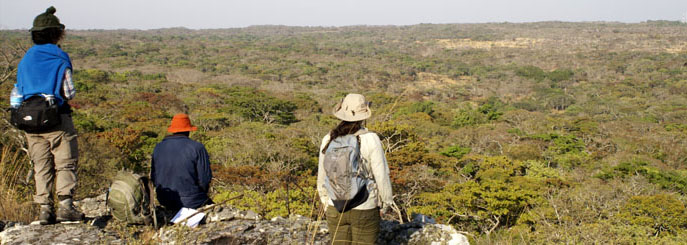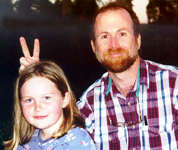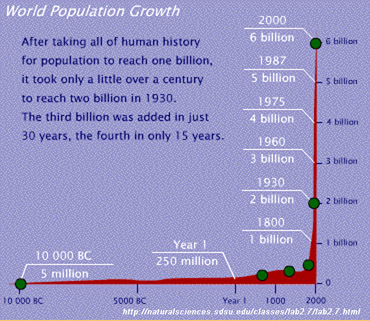

 |
Jim Moore (Assoc. Prof. Emeritus, Anthropology Dept, UCSD)Prospective grad students: I'm formally retired, which obviously changes things. I'm not formally accepting students myself, but am still involved on committees etc. Contact me if you've questions. |
 |
| Publications | Things I've worked on... (includes complete text of some papers) |
| HIV and AIDS | One of the things I've worked on, updated in light of new published analyses and the 2014 Ebola outbreak. It's just possible that we could learn something useful about our response to ebola if we'd acknowledge some uncomfortable things about the origin of HIV. |
| BioAnthro at UCSD | Some general information on biological anthropology. |
| Courses | A variety of handouts and other teaching- related materials. STUDENTS: this is the place for handouts on research papers, who cares about fossil names, and other nifty things. |
| African Ape Study Sites | This is an archive of information on field sites where gorillas, chimpanzees and bonobos have been studied. It is intended for use by researchers interested in comparative socioecology, and contains data, maps, photographs, site bibliographies and the like. For material on ape conservation, see Great Apes Survival Partnership (GRASP-UNEP), Pan African Sanctuary Alliance (PASA) and the Bushmeat Crisis Task Force. |
| Ugalla Primate Project (UPP) | This describes the work my colleagues and I are doing at Ugalla, Tanzania, primarily focused on the adaptation of chimpanzees to a wooded savanna habitat similar to that in which hominids appear to have originated (see e.g. reconstructions of Ardipithecus ramidus' paleohabitat). Note about "savanna chimpanzees": the botanical definition of "savanna" is based on having grass understory - not the absence of trees, as in the popular concept of "savanna" as shortgrass plains with only scattered trees at most. |
| Southern California Primate Research Forum | This is a twice-annual conference (meetings generally in April and November) that alternates among various colleges, universities and zoos in SoCal. Link to see past and future programs, register, etc. |
| Seal Conservancy | If you can't go all the way to "the field" to observe charismatic megavertebrates and study both their behavior and how people relate to nature, just visit La Jolla's Children's Pool! |
| California Wolf Center | You don't have to go much farther away to visit the California Wolf Center (formerly the Julian Wolf Preserve, formerly the Julian Center for Science & Education--OK, there's an identity thing...). The CWC participates in the breeding program for the highly endangered Mexican wolf, and is always looking for volunteers. It's fun! |
| CONTACT | Ready to go [conceptually] a lot farther away to apply your anthropology? CONTACT is an annual conference of anthropologists, science fiction writers and space scientists. |
| Shifting Baselines | To understand the difference between where you are and where you go, in time as well as space, you need to understand your baseline for comparison. Visit this site. It illustrates an important concept that applies to ALL habitat, wildlife, environmental health and globalization issues. |
| SAVE FORESTS | One way to stop baselines from shifting out of sight is to support sustainable forestry. Maybe you don't use much wood (until you buy a house), but imagine if you convince your school, or business, or city to adopt such a policy. The Forest Stewardship Council [FSC] approves guidelines for labeling wood products; "FSC certified" is what you want to buy (they certify both temperate and tropical forests, it is a global organization). Visit Rainforest Action Network for much more information, many links, and searchable archives. |
| TOOLS for understanding shifting baselines of forests | There are a couple of great tools available online for looking at changes in forest cover, introduced late 2013/early 2014. The first is Global Forest Change, operated out of the University of Maryland. The more recent, which looks like it's the more powerful and user-friendly version of the same database, is Global Forest Watch. The GFW "About" page states "Global Forest Watch (GFW) is a dynamic online forest monitoring and alert system that empowers people everywhere to better manage forests. For the first time, Global Forest Watch unites satellite technology, open data, and crowdsourcing to guarantee access to timely and reliable information about forests. GFW is free and follows an open data approach in putting decision-relevant information in the hands of governments, companies, NGOs, and the public." One of it's nifty tools allows you to draw a perimeter and query the database for the amount of forest gain/loss over the last decade. VERY USEFUL WEBSITES if you're trying to monitor what's happening around you. |
| SAVE PRIMATES | And here I am talking about individuals. Nonhuman primates are difficult pets when young, nearly impossible as adults. Biomedical researchers generally use only young chimpanzees, as older ones can be dangerous. The result is hundreds of "retired" animals who need care. We owe them that much. Here are several excellent facilities which can use your help: Save the Chimps and Chimp Haven. There are a number of ape (and other primate) orphanages in Africa - see Pan African Sanctuary Alliance (PASA). Since I happen to be on the Board, a specific shoutout to Friends of Chimps. |
| Picture worth 6,000,000,000 words (and counting) |  |
| Hatten | Forget about anthropology for a while. Or is this anthro? My vote for best contribution of the web to modern civilization as we know it (if the link fails, google "hatten ar din"; it will be somewhere!). And if you enjoy it, turns out there is perhaps a genre being born on the web; if you liked Hatten, try Hyakugojyuuichi! (thanks, Richard Bribiescas, for this addition!), and Yatta. Thanks to Heather York for this rather batty contribution. FYI added in 2017: I originally posted these back in É the 90s? Anyhow, "genre being born on the web" hardly begins to capture it. |
| Ardipithecus ramidus | Back to anthropology. An excellent summary of one of the most important hominid (or hominid, if you like) fossils that has been found. Many thanks to Prof. Hill. |
| Intelligence explained | All of us have an idea of what "intelligence" is, but to understand the concept from both biological and cultural perspectives is a challenge. Here, a crack research team presents a succinct and thoughtful summary. |
| Bersin's blueprint, business models, and Sears | A true story of refrigerator-buying that may be relevant to K-12 educational policy. |
From "To Washoe" by Henrietta Quattrocchi
(CVAS Newsletter 12(8) September 2000)
Her face is prognathic while mine is flat
I have a bigger chin
She has a bigger grin
Make what you will of that.
Octavia Butler (my emphasis)
Associate Professor Anthropology Dept. University of California, San Diego La Jolla, CA 92093 (858) 534-5572; jjmoore@ucsd.edu
Where am I?
Where did I come from?
AB Human Biology 1975 Stanford University MS Biology 1975 Stanford University PhD Biological Anthropology 1985 Harvard University Thesis: Demography and Sociality in Primates (1985)From "Illuminatus" by Robert Shea
"But," Joe protested, "everything fits the Law. The harder I looked, the more things there were that fit."
"Exactly," said Hagbard. "Think about that."
